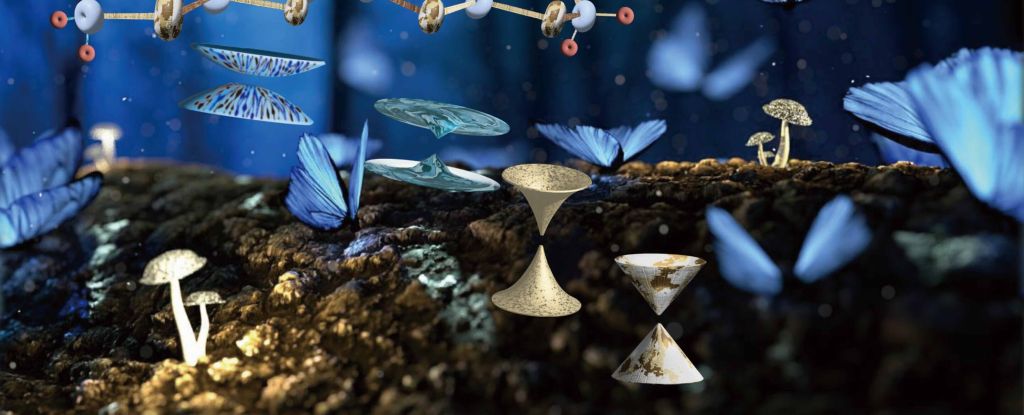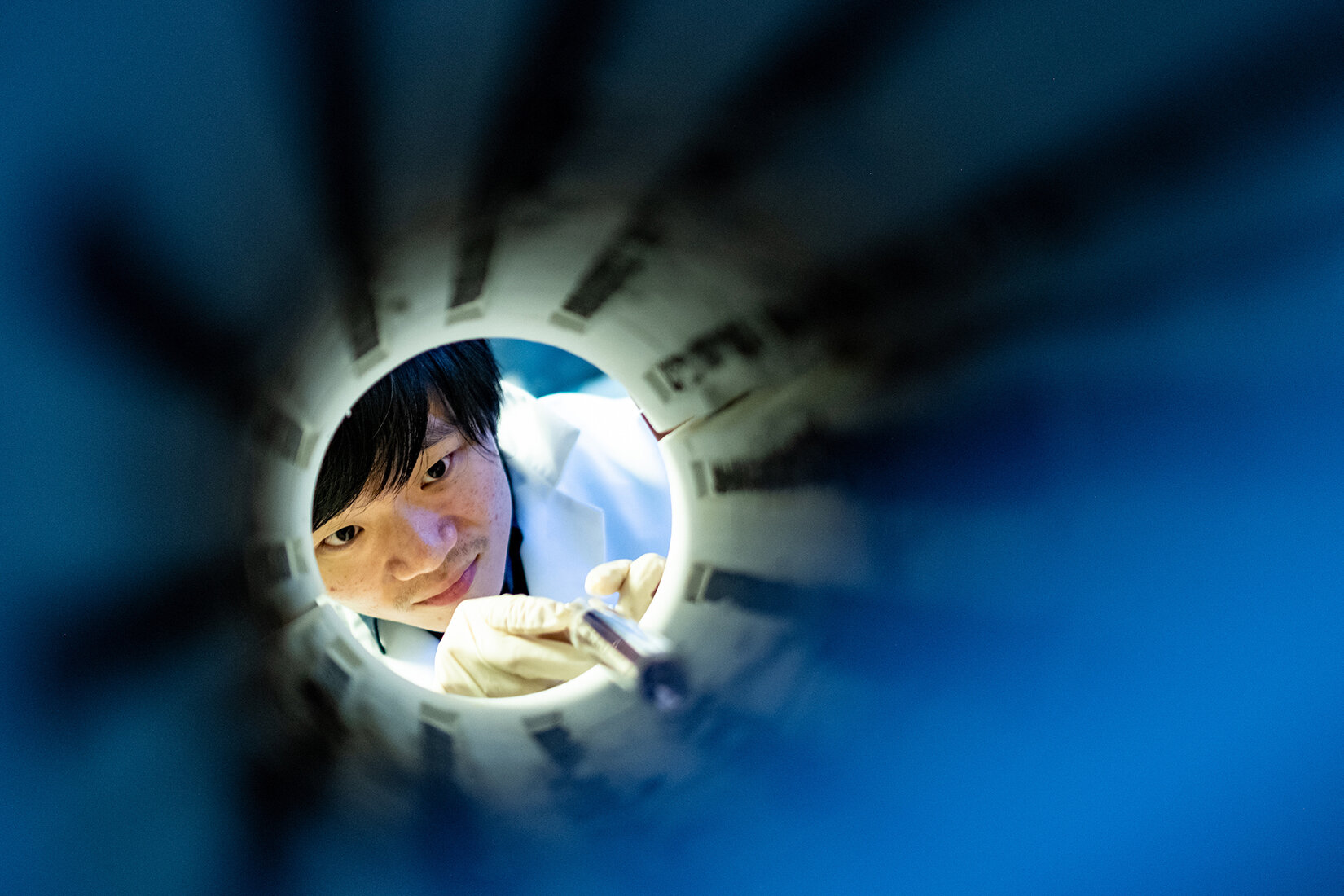Nueva misión inesperada para los astrónomos después del misterioso descubrimiento de Webb de un raro cometa del cinturón principal

Esta ilustración del cometa 238P/Read muestra la sublimación del cometa del cinturón principal: su hielo de agua se vaporiza a medida que su órbita se acerca al Sol. Esto es significativo, ya que la sublimación es lo que distingue a los cometas de los asteroides, creando su distintiva cola y halo brumoso o coma. Es especialmente importante para el cometa Read, ya que es uno de los 16 cometas del cinturón principal identificados que se encuentran en el cinturón de asteroides, a diferencia del más frío Cinturón de Kuiper o la Nube de Oort, más lejos del Sol. El cometa Read fue uno de los tres cometas utilizados para definir la clase de cometas del cinturón principal en 2006. Crédito: NASA, ESA
El último descubrimiento del telescopio espacial James Webb es una historia de dos detecciones.
Los científicos del sistema solar tomaron[{” attribute=””>NASA’s James Webb Space Telescope on a treasure hunt in the asteroid belt, and what they didn’t find turned out to be as significant as what they did. If a spectrum of possible chemical compounds serves as a map of what to look for, X marked the spot of water vapor on Comet Read – a long-sought clue in the larger mystery of how Earth’s liquid water, and consequently life, first came to be. However, carbon dioxide was missing from the map, though it is present in all other comets. So in addition to continuing to pursue the history of ancient water in the solar system, scientists have an unexpected new quest on their hands, and will be hunting for answers in our cosmic backyard.

This image of Comet 238P/Read was captured by the NIRCam (Near-Infrared Camera) instrument on NASA’s James Webb Space Telescope on September 8, 2022. It displays the hazy halo, called the coma, and tail that are characteristic of comets, as opposed to asteroids. The dusty coma and tail result from the vaporization of ices as the Sun warms the main body of the comet. Credit: NASA, ESA, CSA, Mike Kelley (UMD), Henry Hsieh (PSI), Alyssa Pagan (STScI)
NASA’s Webb Finds Water, and a New Mystery, in Rare Main Belt Comet
NASA’s James Webb Space Telescope has enabled another long-sought scientific breakthrough, this time for solar system scientists studying the origins of Earth’s abundant water. Using Webb’s NIRSpec (Near-Infrared Spectrograph) instrument, astronomers have confirmed gas – specifically water vapor – around a comet in the main asteroid belt for the first time, indicating that water ice from the primordial solar system can be preserved in that region. However, the successful detection of water comes with a new puzzle: unlike other comets, Comet 238P/Read had no detectable carbon dioxide.
“Our water-soaked world, teeming with life and unique in the universe as far as we know, is something of a mystery – we’re not sure how all this water got here,” said Stefanie Milam, Webb deputy project scientist for planetary science and a co-author on the study reporting the finding. “Understanding the history of water distribution in the solar system will help us to understand other planetary systems, and if they could be on their way to hosting an Earth-like planet,” she added.

This graphic presentation of spectral data highlights a key similarity and difference between observations of Comet 238P/Read by the NIRSpec (Near-Infrared Spectrograph) instrument on NASA’s James Webb Space Telescope in 2022 and observations of Comet 103P/Hartley 2 by NASA’s Deep Impact mission in 2010. Both show a distinct peak in the region of the spectrum associated with water. Finding this in Comet Read was a significant accomplishment for Webb, as it is in a different class of comets than Jupiter-family comets like Hartley 2, and this marks the first time that a gas has been confirmed in such a main belt comet. Credit: NASA, ESA, CSA, Joseph Olmsted (STScI)
Comet Read is a main belt comet – an object that resides in the main asteroid belt but which periodically displays a halo, or coma, and tail like a comet. Main belt comets themselves are a fairly new classification, and Comet Read was one of the original three comets used to establish the category. Before that, comets were understood to reside in the Kuiper Belt and Oort Cloud, beyond the orbit of Neptune, where their ices could be preserved farther from the Sun. Frozen material that vaporizes as they approach the Sun is what gives comets their distinctive coma and streaming tail, differentiating them from asteroids. Scientists have long speculated that water ice could be preserved in the warmer asteroid belt, inside the orbit of Jupiter, but definitive proof was elusive – until Webb.
“In the past, we’ve seen objects in the main belt with all the characteristics of comets, but only with this precise spectral data from Webb can we say yes, it’s definitely water ice that is creating that effect,” explained astronomer Michael Kelley of the University of Maryland, lead author of the study.
“With Webb’s observations of Comet Read, we can now demonstrate that water ice from the early solar system can be preserved in the asteroid belt,” Kelley said.

Image of Comet 238P/Read captured by the Webb Telescope’s NIRCam (Near-Infrared Camera), with compass arrows, scale bar, and color key for reference.
The north and east compass arrows show the orientation of the image on the sky. Note that the relationship between north and east on the sky (as seen from below) is flipped relative to direction arrows on a map of the ground (as seen from above). A scale bar is labeled 3,000 kilometers and 2,000 miles.
This image shows near-infrared wavelengths of light that have been translated into visible-light colors. The color key shows the filter used when collecting the light.
Credit: NASA, ESA, CSA, Mike Kelley, Henry Hsieh (PSI), Alyssa Pagan (STScI)
The missing carbon dioxide was a bigger surprise. Typically, carbon dioxide makes up about 10 percent of the volatile material in a comet that can be easily vaporized by the Sun’s heat. The science team presents two possible explanations for the lack of carbon dioxide. One possibility is that Comet Read had carbon dioxide when it formed but has lost that because of warm temperatures.
“Being in the asteroid belt for a long time could do it – carbon dioxide vaporizes more easily than water ice, and could percolate out over billions of years,” Kelley said. Alternatively, he said, Comet Read may have formed in a particularly warm pocket of the solar system, where no carbon dioxide was available.
The next step is taking the research beyond Comet Read to see how other main belt comets compare, says astronomer Heidi Hammel of the Association of Universities for Research in Astronomy (AURA), lead for Webb’s Guaranteed Time Observations for solar system objects and co-author of the study. “These objects in the asteroid belt are small and faint, and with Webb we can finally see what is going on with them and draw some conclusions. Do other main belt comets also lack carbon dioxide? Either way, it will be exciting to find out,” Hammel said.
Co-author Milam imagines the possibilities of bringing the research even closer to home. “Now that Webb has confirmed there is water preserved as close as the asteroid belt, it would be fascinating to follow up on this discovery with a sample collection mission, and learn what else the main belt comets can tell us.”
The study is published in the journal Nature.
Reference: “Spectroscopic identification of water emission from a main-belt comet” by Michael S. P. Kelley, Henry H. Hsieh, Dennis Bodewits, Mohammad Saki, Geronimo L. Villanueva, Stefanie N. Milam and Heidi B. Hammel, 15 May 2023, Nature.
DOI: 10.1038/s41586-023-06152-y

“Creador malvado. Estudiante. Jugador apasionado. Nerd incondicional de las redes sociales. Adicto a la música”.





